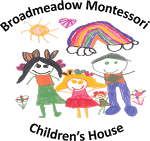Kindergarten in Broadmeadow
Our classroom is a vibrant community of about 39 children aged 2-6 years. The older children teach the younger, thereby further increasing their knowledge and confidence. They also acquire a sense of responsibility through being leaders in the class which further enhances their self image. Meanwhile younger children are inspired to more advanced work through observing the older ones. With such a variety of levels in the classroom each child can work at his/her own pace. The program therefore facilitates the development of a caring community within which co-operative, rather than competitive learning can flourish.
The classroom is attractive and inspiring with an array of carefully designed materials and activities. The children are free to engage in those activities which interest them. They can work by themselves, with a friend, or with a group of friends, and can spend as much time as needed on any activity. They have opportunities to do things they see parents do at home. They can prepare food. They can sweep, scrub and clean. They can hammer, nail and saw. They can learn to tie shoes and to polish. They can listen to music, sing, dance and play instruments. They can paint, draw, work with clay, learn to sew, make masks or puppets. They can learn to count or to make words. They can look at books about all the wonderful things in the world about them. They can examine globes of the world and make flags from different countries. They can examine pictures of different parts of the world and different cultures. And outside they can run, jump, climb, play games and have fun with their friends.
Montessori Approach to Education
Montessori education is the result of the life and work of Dr. Maria Montessori (1870-1952), the first Italian female doctor who devoted her life to children and their education. She gave the world a scientific method, practical and tested, for bringing forth the very best in young children. The Montessori approach enriches the life and development of the “whole child”. She acknowledged that children grow and develop at different rates. It is designed to help children reach their potential at their own pace. It is an holistic approach, that takes into account all aspects of the child’s developmental needs -physical, emotional, intellectual, social and spiritual.
The Montessori Curriculum relates well to the early Years Learning Framework as both are designed to provide quality outcomes for Children. Both documents are used in the reflective practice of our educators.

The Prepared Environment and the Program
Great care is taken to create a learning environment that reinforces the child’s independence and natural urge toward self-development. Rather than “teaching” the child facts and concepts, the thoughtfully “prepared environment” is designed to stimulate the child’s interests and facilitate natural learning. Intrinsically motivated and curious to explore, the child learns through direct experiences and hands on learning using concrete materials. Each piece of material has a specific purpose, and is presented to the children in a manner that will enable them to direct their own learning. This self-education establishes a sense of order, logical thought processes, concentration, persistence, discipline, self-confidence, and lays a firm foundation for lifelong learning.
The classroom is not merely a place for individual learning. It is a vibrant community of children, where the child learns to interact socially in a variety of ways. The multi age grouping enables older children to teach the younger and learn much themselves from the experience, while the younger children are inspired to more advanced work through observing the older ones. With such a variety of levels in the classroom, each child can work at his or her own pace, unhindered by competition and encouraged by co-operation. Guidance and support are given by educators through one-on-one presentations and small group lessons. The environment is organized into the following curriculum areas: Practical Life, Sensorial, Mathematics, Language and Culture.
Transition to School
When Dr. Montessori spoke of ‘education for life’ she meant preparing a child for the myriad experiences he or she will encounter, both in and outside of the Children’s House which of course includes moving from a Montessori Centre to begin in a traditional primary school, The children usually make the transition well, both emotionally and academically. This is not a random outcome as in the Montessori Classroom, the child, since age 3 has had many years of daily practice in working cooperatively; negotiation with peers; being a leader or a follower, depending on the requirements of the situation; and learning how to learn. This gives them the confidence in themselves and transition to school becomes a positive and pleasant experience.



